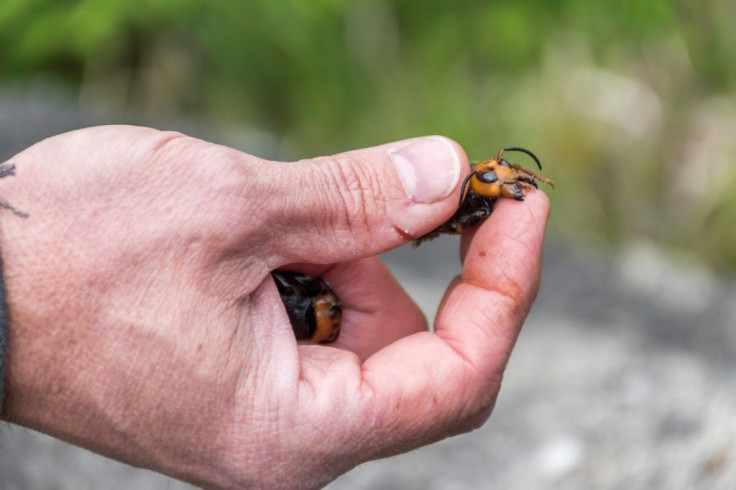What Is 'Slaughter Phase?' 'Murder Hornets' About To Enter Brutal Stage [Video]
KEY POINTS
- It is about the time of year for the so-called murder hornets' "slaughter phase"
- This brutal phase could prove problematic for native bee species
- Authorities are now working to find the existing nest as the slaughter phase nears
- People are being advised to "track, don't whack" Asian giant hornets but also to be careful
What is a "slaughter phase"? Washington state authorities are rushing to find the Asian giant hornet nest before they enter this brutal stage.
It was in December 2019 when the first Asian giant hornet, popularly known as "murder hornet," was discovered in Washington state. Since then, others have reportedly been spotted in the same area, some of which were alive while the others were found dead.
On Oct. 2, the Washington State Department of Agriculture (WSDA) held an online news conference where the agency noted the urgency to find and destroy the existing nest where the hornets are coming from. This is because what's known as the Asian giant hornets' "slaughter phase," part of the reason why the notorious species has been dubbed the murder hornet, is at hand.
"Asian giant hornets this time of year start going into what we call the slaughter phase," WSDA entomologist Sven-Erik Spichiger said in the news conference, The Seattle Times reported.
As the WSDA explains, during the slaughter phase, Asian giant hornets attack and destroy honeybee hives by killing the bees via decapitation, taking over the hive as their own then harvesting the bees' broods as food for themselves and their young. In just a matter of hours, even just a few Asian giant hornets can completely destroy a hive, the agency notes.
This could obviously be problematic for the native bee population, which is why the agency is working on finding the nest before the slaughter phase begins and before new nests are created. Only recently, a team of researchers estimated how murder hornets can spread if action is not taken to eliminate them.
"If it becomes established, this hornet will have negative impacts on the environment, economy and public health of Washington State," WSDA said.
The efforts being made to track the nest include trapping live Asian giant hornets and gluing tags on them so they can fly home and lead the authorities to the nest. However, the live hornet that the WSDA glued the tag on was unable to fly home because the glue got on its wings, the outlet added.
Given the urgency of the matter, efforts to track the existing nest are ongoing and people who spot possible Asian giant hornets are being advised not to kill it but instead to call authorities using the Hornet Watch Report Form, via email at hornets@agr.wa.gov or by calling 1-800-443-6684. It's worth noting, however, that the hotline is rather backed up, so it's best to only use it if one does not have access to email.
"Track it, don't whack it," Spichiger said. "We want to take out the nest so we don't have more next year."
See posts, photos and more on Facebook.
But the agency is warning everyone to use "extreme caution" near Asian giant hornets as they are said to be more dangerous than native bees and wasps.
"If you find a colony, do not attempt to remove or eradicate it. Report it to the WSDA immediately," WSDA warns. "Anyone who is allergic to bee or wasp stings should never approach an Asian giant hornet."

© Copyright IBTimes 2024. All rights reserved.






















